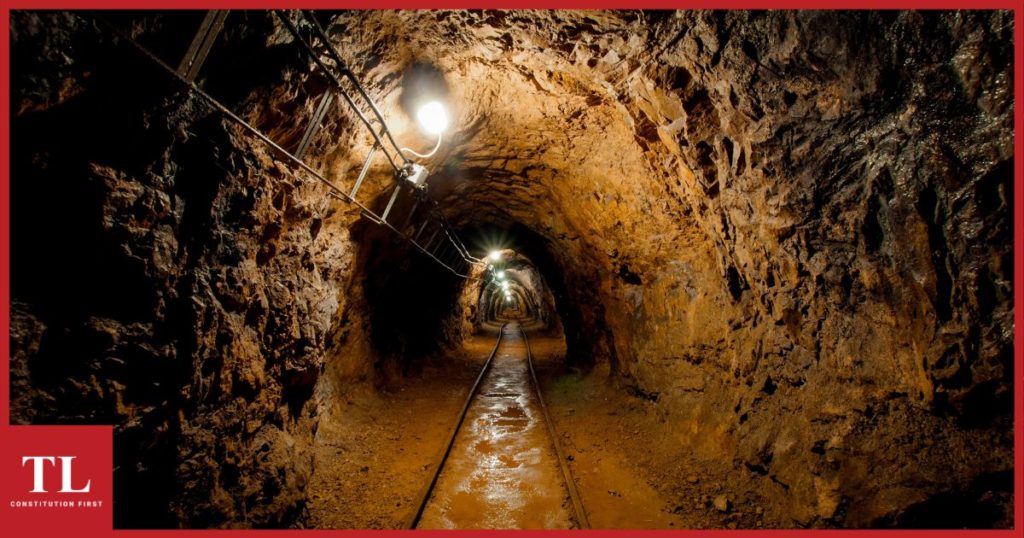Amidst the din over farm bills, the BJP government (it should no longer be called NDA since there are no ministers from any coalition parties) has deftly maneuvered the Mines and Minerals (Development and Regulation) Amendment Bill 2021 through both Houses of Parliament. It’s the BJP’s trademark now to introduce bills at short notice and then have them sail through without much discussion about their import.
Exploitation, Not Conservation
As is perhaps expected of the times we live in, the focus is on exploitation than conservation and sustenance. It is easy to blame previous governments for things that have not been done and easier still to throw figures to sustain that line of argument. Sample these:
- Mining accounts for 7% of the GDP of South Africa and Australia, whereas India does poorly at 1.75%. So the basic argument is that we need to mine more.
- Of the 2,904 large mining leases for major minerals like iron ore and coal, 1,900 have been lying unused for years. States have been able to auction off only seven mining leases so far. So the line of reasoning is that the potential is underutilised and the central government needs to come into the picture.
- Then there is the minor matter of exploration and mining licenses. The method so far had been that a company or individual first applies for licenses and clearances to get the environmental nod and if it comes good, the same process of clearances is required to start mining. The present government has decided to unify the license for exploration and mining. So anyone who finds anything while exploring—gas, ore, oil—can start mining immediately.
Different Scenarios
It’s always easy to roll out half-baked facts and figures to support any argument. We can’t compete with South Africa and Australia just yet. This is because our heavy machinery was not in place and now environment concerns and sustainability have to be kept in mind.
Just stating that we have enough coal for 100 years is not enough to start opening mines randomly.
We still import coal as it is of better quality and cheaper than if we mined our own reserves.
Mining leases have been held back by public sector companies because it is directly proportional to the expansion rate. If sarkari experts are to be heeded, then all mines held by state governments and public sector units –which keep the cost of end-products like electricity and steel down—should be thrown open to the private sector.
The Constitution guarantees that land and everything over and beneath it is owned by states.
Federal mining licences apply to select companies and in the socialist era, they were given mostly to public sector companies like the National Mineral Development Corporation and Steel Authority of India. For these, the states stand to collect a premium or royalty per tonne of mineral extracted. Most mineral-rich states such as Chhattisgarh, MP, Odisha, Jharkhand, Maharashtra, Goa and Rajasthan draw a huge amount of their revenue from mining.
State vs Centre
The first and foremost change that the new Mines and Minerals Development and Regulation (MMDR) will bring in is direct interference in the state subject.
Almost all the mineral-rich states are non-BJP ruled, so the Union government has to interfere if it wants to parcel off mines to its favourites.
Section 14 (iii) of the Bill says that if a state is unable to auction off listed mines, then the centre will decide. It has thus created a complex scenario where either the states will auction off mines much below par to maintain their sovereignty or will have to make way for the Centre.
Mining companies may form cartels and decide not to bid if the state government is too demanding and will then turn to the centre to solve the issue for them. The state will then be left with the responsibility to clear all hurdles on the ground for the mining company.
This assumes significance in the face of other changes that have been made in the Wildlife Act and environment policies at the central level. The powers of the gram sabha to stop mining in its area have been diluted. Everything that the BJP blamed former environment ministers Jayanti Natarajan and Jairam Ramesh for–from holding on to files and obstructing licenses—has now been eased.
The second direct interference in the working of the state is more significant, even though it looks innocuous, to begin with. The District Mining Fund (DMF) lies in the exclusive control of the district collector and through him, the state government. It is collected from mining operations in the district and often used as an emergency fund, besides its statutory use as a development fund. State governments usually broaden this development to include everything from health and sanitation to drinking water projects.
Odisha, for instance, utilised it DMF in several districts to build fully equipped Covid hospitals. Through Section 10 (1), the centre now will control the DMF directly as it reasons that 45% of the entire fund in the country remains unused because collectors don’t know where to use it and are in severe need of guidance. How the states will react to these developments will only be seen once the Act is challenged in the Supreme Court.
Major Changes
Meanwhile, the Union government is pushing ahead with changes in the MMDR. These are:
- The original Act empowers the central government to reserve any mine (other than coal, lignite and atomic minerals) to be leased through an auction for a particular end-use (such as iron ore mine for a steel plant). The MMDR has removed all such end-use restrictions on all captive mines. This will immensely benefit those already in possession of captive mines and are looking to change course.
- The second logical step to benefit the private sector would be to allow it to sell minerals from its captive mines in the open market. The MMDR provides that captive mines (other than atomic minerals) may sell up to 50% of their annual mineral production in the open market after meeting their own needs. Moreover, the central government may increase this threshold through a notification. The lessee will only have to pay additional royalty. This actually means that all heavy industries will also become mining companies.
- Under the original Act, states conduct the auction of mineral concessions (other than coal, lignite and atomic minerals). Mineral concessions include mining lease and prospecting license-cum-mining lease. The Bill empowers the central government to specify a time period for completion of the auction process in consultation with the state government. If the state government is unable to complete the auction process within this period, it may be conducted by the central government, thus usurping the powers of the state.
- Any new lesse of an existing mine transferred from the original owner will not be required to wait for a statutory period of two years to begin mining. It effectively means that the old party goes out and the new one comes in with all the old licenses and clearances. This is very useful when a private party like Adani takes over a public sector mine.
- The MMDR Act provides that the period of mining leases granted to government companies will be prescribed by the central government. This can be extended on payment of additional amount prescribed in the Bill. This is where the clash of interest with the states will intensify.
Apart from these, the MMDR provides that a mining lease can lapse if a company does not mine for two years and the states will be able to extend concession only once, after which the mine will pass into the control of the Union government.
This, of course, is only a preliminary analysis of the changes and their long-term impact for states and the entire mining sector. The states will have to approach the Supreme Court with caution and all preparations because their mining wealth is at stake.
(Neeraj Mishra is a senior journalist, farmer and lawyer based in Raipur, Chhattisgarh. Courtesy: The Leaflet.)




